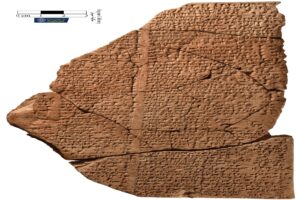Somewhere in the Appalachian foothills of Alabama, there’s a cramped, five-kilometre-long network of passages that contain a unique trove of Woodland-period cave art. It dates back to somewhere between 130 to 400 AD.
Researchers first mapped the art in 1998. But thanks to a technique known as photogrammetry, figures and patterns once invisible to the naked eye are now visible in all their glory.
Old cave art, new techniques
In a paper recently published in the journal Antiquity, the authors describe an array of human and animal figures as well as abstract patterns. The art is spread over a ceiling of nearly 460 square metres.

19th Unnamed Cave. Photo: chrisontour84/Shutterstock
Many of the figures are life-sized — an exceedingly rare find east of the Mississippi.
One of the works, an eastern diamondback rattlesnake, is 3.4 metres long. If you aren’t familiar with the fauna of the American southeast, yes, they do get that big. Many other figures represent humans kitted out in ceremonial garb. Check out the art here.
The cave — known as the 19th Unnamed Cave to protect it from vandals — is less than 60cm high in places. The artists would have lain on their backs and used their fingers or tools to inscribe the art into the thin layer of mud that coats the cave’s ceiling.
This method of drawing, combined with the damp cave conditions, is why it took specialized equipment to discover the true nature of the art.
Discoveries await
Researchers took over 4,000 50-megapixel photographs and created three-dimensional, overlapping images that render the drawings visible. Photogrammetry is an established practice for mapmakers, but its use in mapping cave art is relatively new.
That a previously mapped cave could reveal discoveries thanks to this technique is good news for researchers and history nuts alike.






